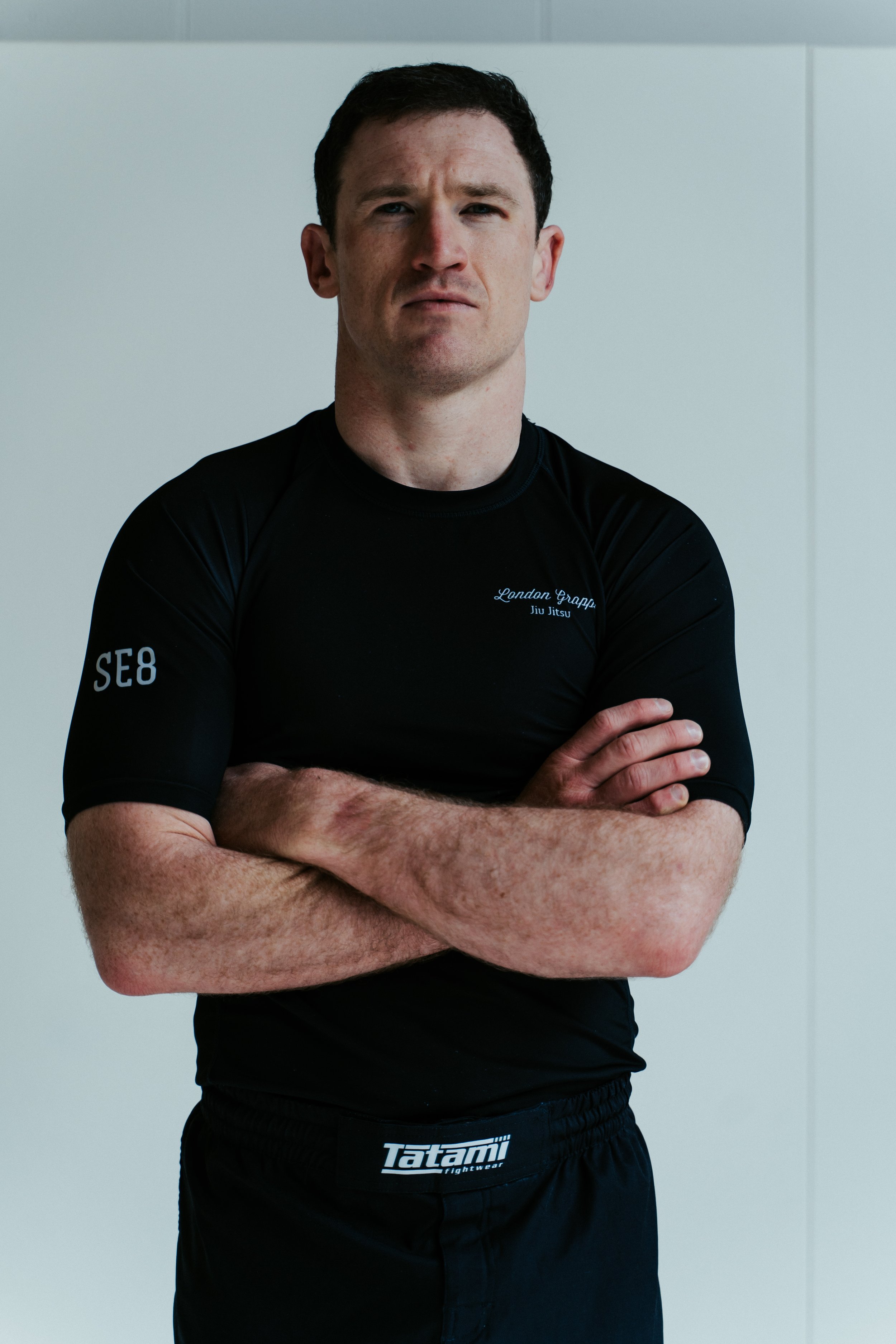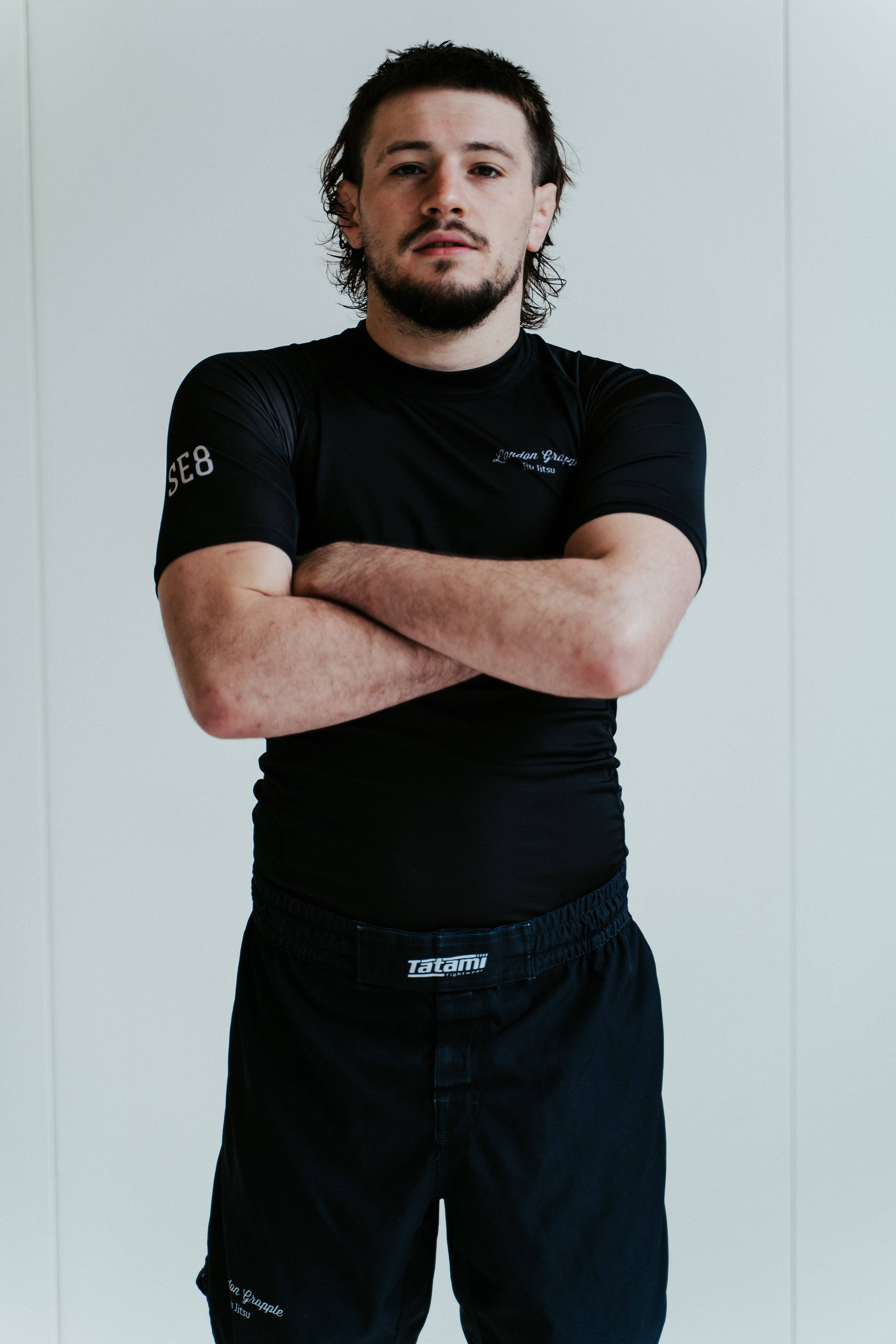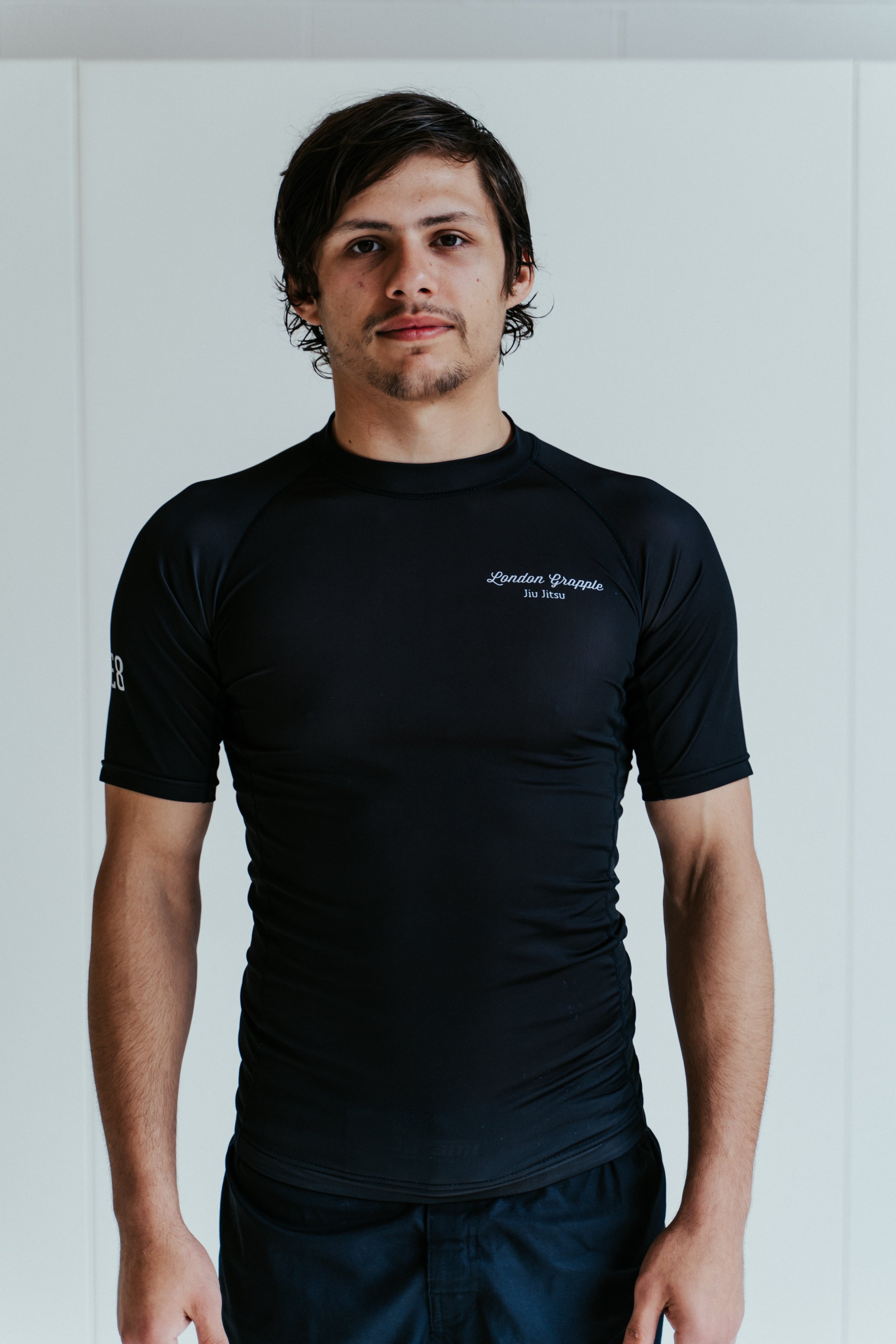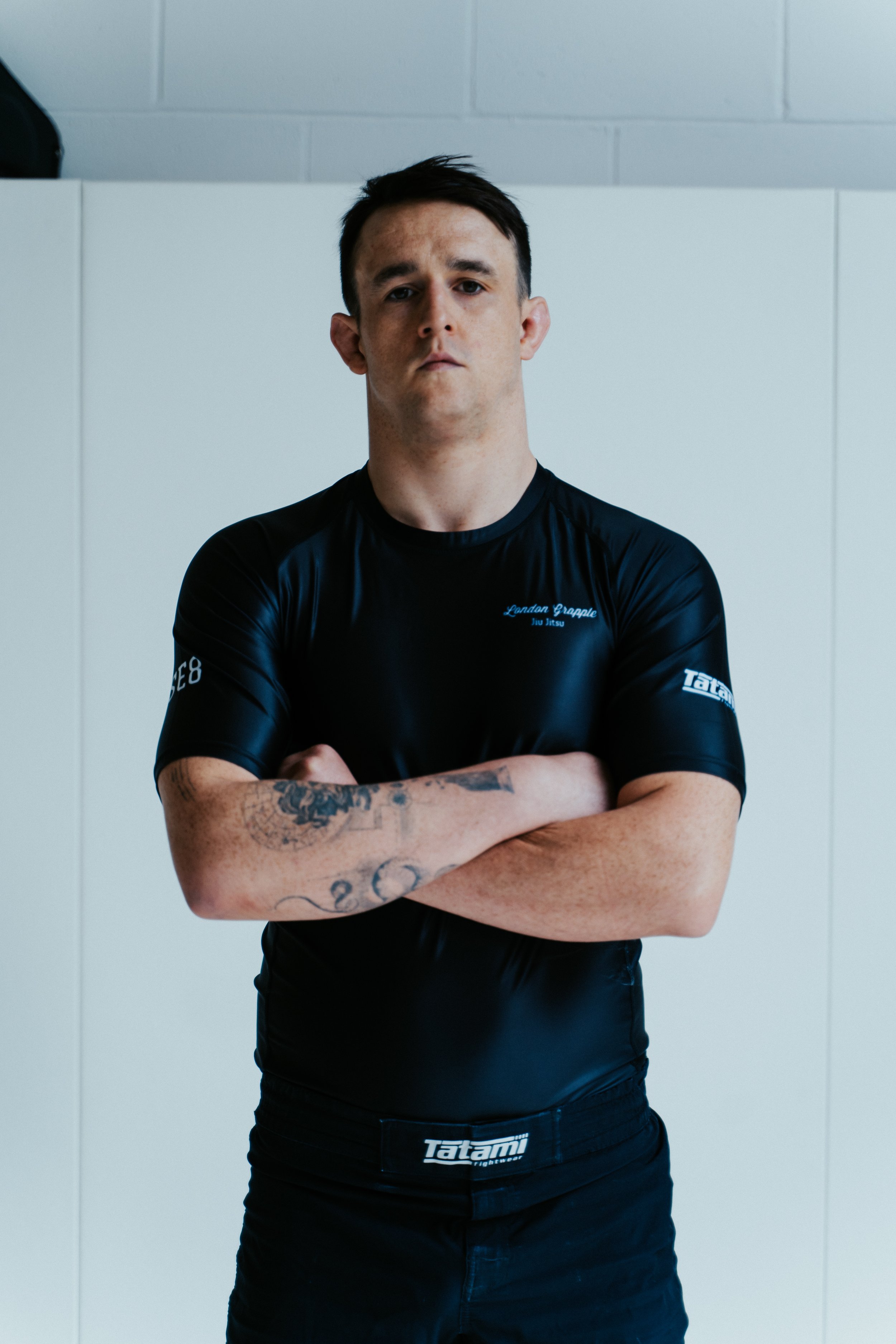
World Class No Gi BJJ in London
Are you looking for submission grappling near me to master a new skill, get stronger and build mental toughness? Located conveniently in Deptford, South East London, our top-rated martial arts gym is easily accessible and ready to welcome you into our family of Brazilian Jiu-Jitsu practitioners who prefer to train without the kimono.
Whether you’re a complete beginner taking the first step into martial arts or looking to further your Jiu-Jitsu training, our friendly and experienced instructors are here to guide you every step of the way.
No Gi Class Types
Introduction - caters to white belts with 6 months or less grappling experience
Fundamental - covering the fundamental techniques and movements, this class caters to white and blue belts
Mixed - covering fundamental through to advanced techniques and movements, this class caters to all belt levels
Advanced - these sessions are catered to blue belt and above
Competition Open Mat - these sessions are sparring only and catered to high-level athletes & hobbyists
Competition Class - these classes are competition-focused, helping athletes and hobbyists prepare for sport of submission grappling.
Grappling Class Structure
Coaches cover a theme that progresses in each class across the course of a week (e.g. mount attacks). 50% of class time is spent drilling and 50% participating in live sparring. Sparring rounds are 5 minutes each, with a 30-second break to change partners.
What is BJJ No Gi?
As the name suggests, no gi training is undertaken without the gi uniform. This style of grappling is generally faster and more dynamic than gi grappling. Including positions and submissions that are not allowed and/or not available in the gi.
In recent years, no gi grappling has advanced considerably due to the adoption of positions and techniques from the other grappling arts and the adoption of leg lock systems.
How To Get Started
Book a free No Gi BJJ trial class at London Grapple.
Meet our grappling coaches
Our No-Gi BJJ coaches bring an elite level of experience, technical mastery, and competition pedigree to the mats. With backgrounds in world-class tournaments such as ADCC or IBJJF competitions, and submission grappling shows like Polaris Pro Grappling, some of our instructors have tested their skills against the best in the sport.
Ross Nicholls
Aidan Woodhouse
Nathan Kay
Harry Powell
Peter Shamarkou
Matt Ludlow
Ready to roll?
Are you looking for ‘no gi bjj near me’ to see why it’s getting more and more popular? Or, perhaps you want to boost your overall physical fitness and learn self-defence skills.
Book a free trial class and start your grappling journey with us.
No Gi BJJ FAQs
-
Also known as Submission Grappling, it is a form of Brazilian Jiu Jitsu that is performed without the traditional uniform (Gi). It often incorporates techniques from Brazilian Jiu Jitsu as well as other grappling arts, including wrestling and judo. There is an emphasis on techniques that are prohibited in traditional BJJ competition, e.g. heel hook submissions.
-
Without the use of the gi to make grips, control is created by body positioning. For this reason, no gi BJJ is often more dynamic.
-
No, prior experience in BJJ is not necessary to start training in no gi grappling. However, many people choose to train in both, finding that they complement each other well.
-
For no gi grappling, you typically wear shorts and a rash guard to minimise friction and prevent skin irritation.
Many participants will opt to wear spats (spandex leggings) under their shorts for this reason. Use of a mouth guard is optional, but recommended.
-
Submissions in no gi grappling may require adjustments due to the lack of a gi to grip, but many techniques are still applicable. Some submissions that are generally prohibited in gi competition, such as heel hooks and other leg locks can be found in no gi grappling.
-
Yes, no gi grappling can be effective for self-defence, as it teaches techniques for controlling and neutralising opponents in close combat situations.
-
Technique is generally more important than strength in no gi grappling, as proper positioning and leverage can overcome physical attributes. It is not uncommon to see a technically superior player dominate a much larger opponent in competition.
-
Yes, we use the same belt system as in BJJ for our no gi grapplers, even if they do not train in the gi. This ensures that they are able to compete in the correct skill division in competitions.
-
Improving your no gi grappling skills involves consistent practice of techniques, and rolling with training partners of varying skill levels. Our coaches are committed to helping you level up so the best thing to do is train.
-
Leg locks, including heel hooks, are no more dangerous than many other joint lock providing they are practiced correctly with proper supervision, control, and respect for your training partner. At London Grapple, we are committed to helping students understand the mechanics of all joint locks, how to apply them safely, and how to recognise when to release the pressure to prevent injury.
-
No gi players might look to take their opponent down, pass their guard (get around their legs) and use various pins to control and eventually submit them. Alternatively,they may look to accept bottom position (pull guard) where they will try to submit, sweep or take their opponents back.
What People Say
No Gi BJJ techniques
London Grapple videos available on our YouTube channel offer an insightful glimpse into the world of No Gi BJJ.
Our Head Coach, Ross Nicholls, has one of the best no-gi butterfly guards in the world. Here, he demonstrates some key concepts in completing a no gi butterfly sweep. This is an extract from the butterfly guard section of our no gi beginners course, free and available to London Grapple members.




































